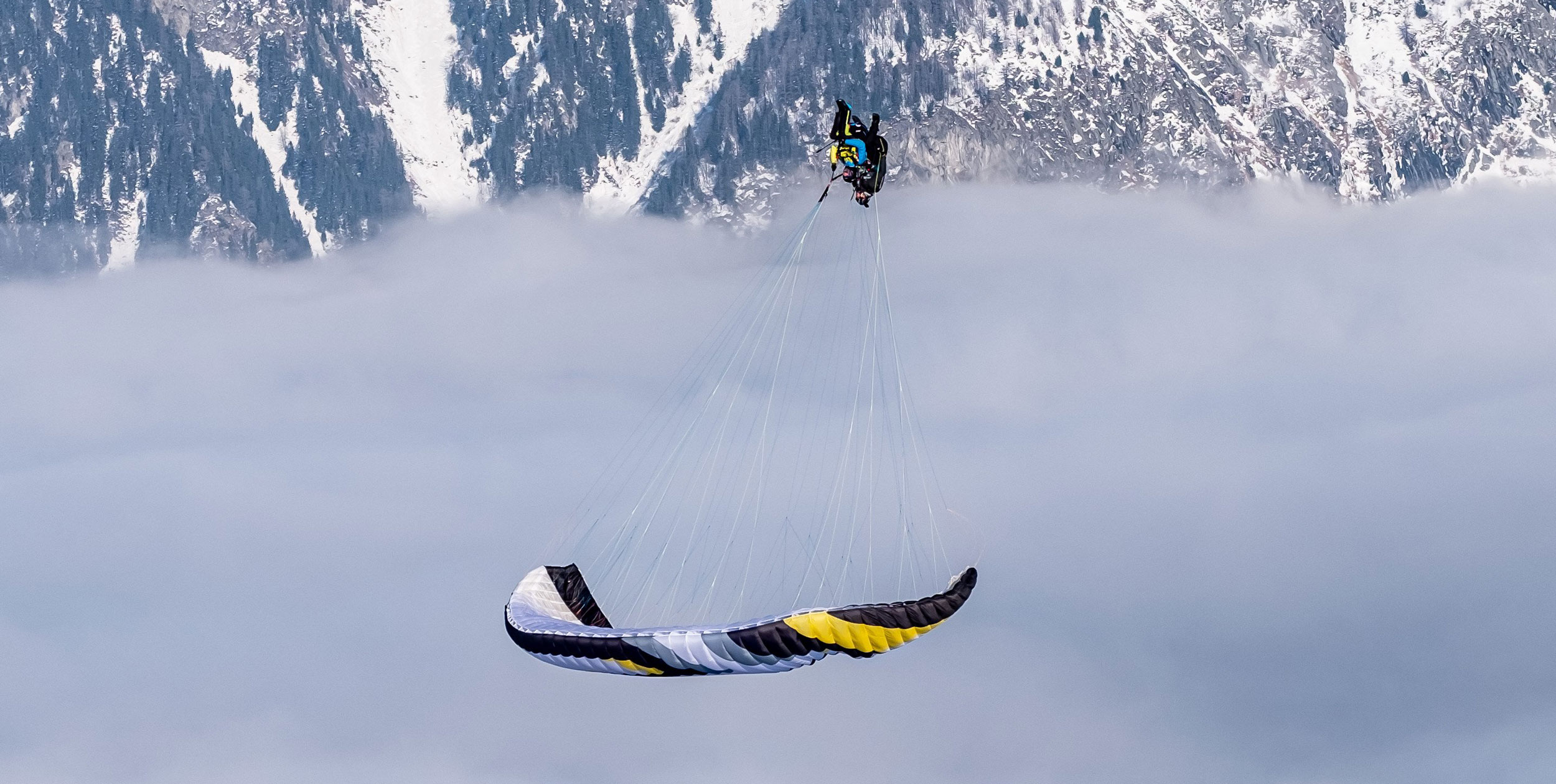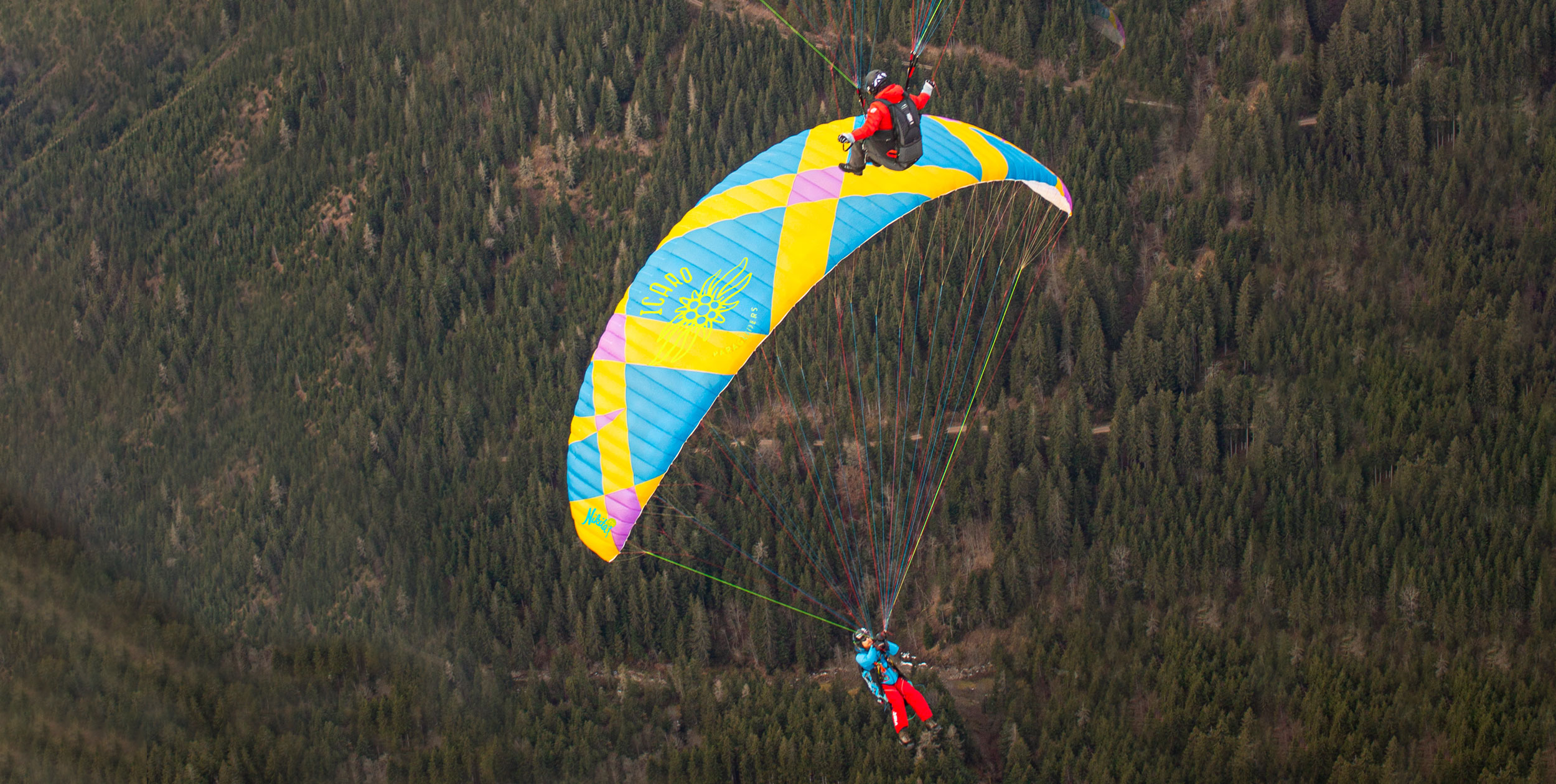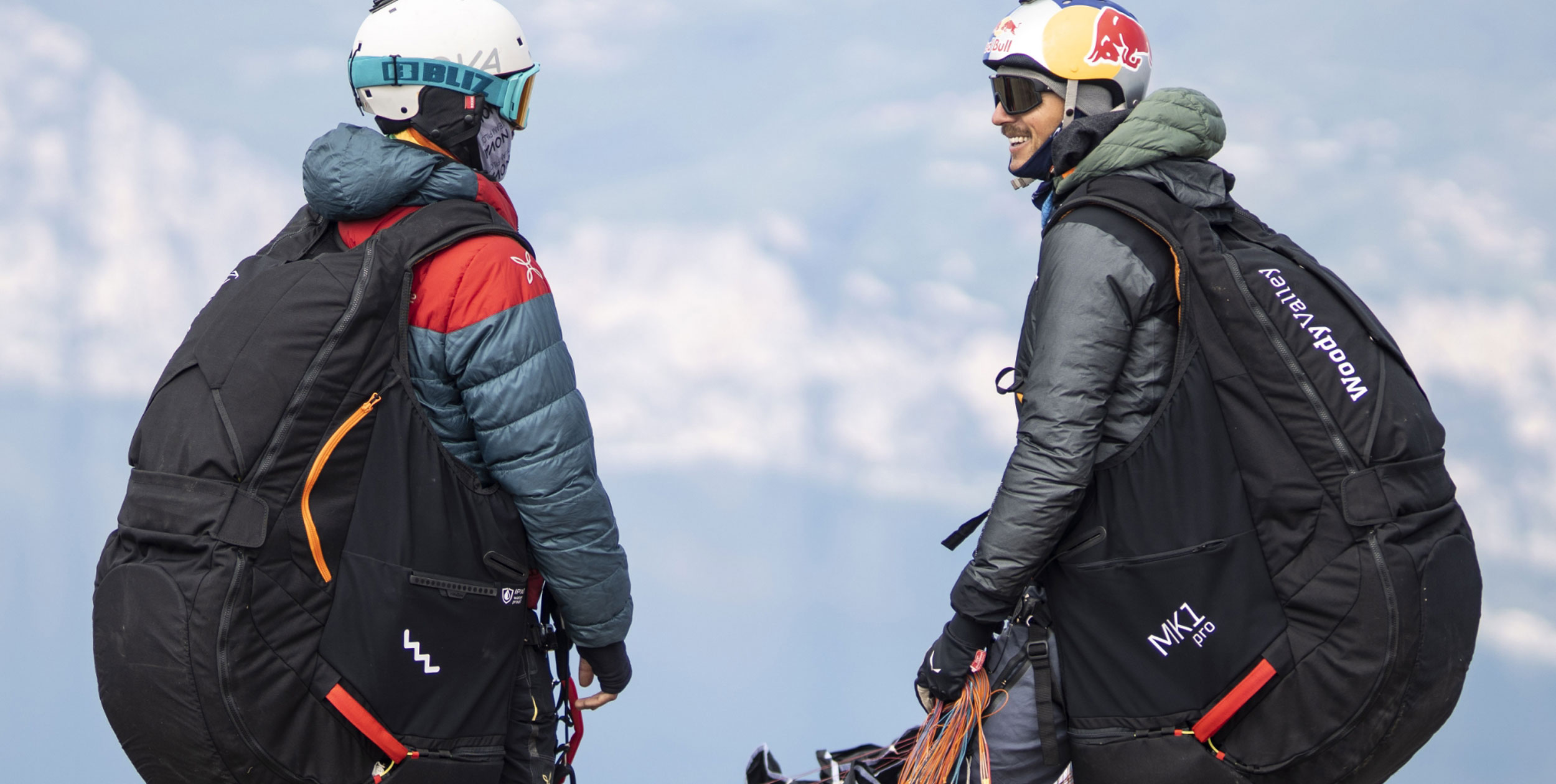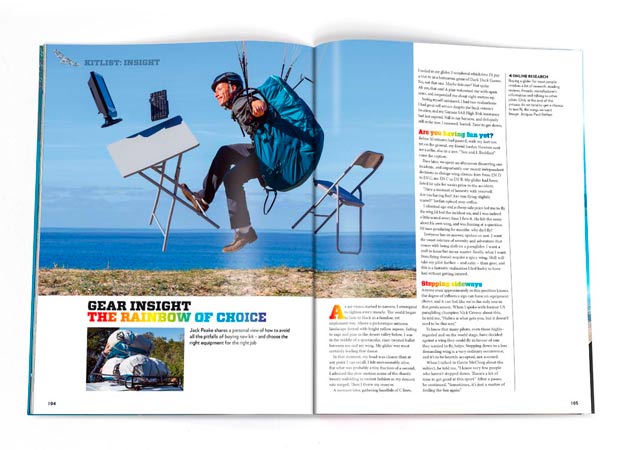The early days: Raul tumbling in 2005
Raul Rodriguez explains how the Infinite Tumble developed. Published 2005
Aerobatics were so much a part of our lives that in 1998 we decided to form the world’s first acrobatic team, the Safety Acro Team or SAT for short. Pulling together friends and pilots from around the globe who shared our passion, we’d meet together whenever we could to fly and learn from each other. It was a fantastic time but unfortunately paragliding aerobatics had reached a plateau and become a bit staid. People were doing big wingovers, loops and reversals but there were no new manoeuvres; but this was about to change.
In 1999 we travelled to Argentina, filming and flying with the SAT team. It was during this trip I discovered a completely new manoeuvre that suddenly opened a huge world of possibilities, I named it after our team and the SAT was born. Over the next few months we practised this new manoeuvre constantly, perfecting it and evolving it into first the ‘Asymmetric SAT’ and then the ‘Tumble’, which was what I had actually been trying to do when I first discovered the SAT.
With our bag of new tricks overflowing, Felix and I headed off to our first acrobatic competition, Red Bull Vertigo 2000 at Villenueve in Switzerland. We were really excited to show what we could now do to the paragliding world and, as no one else could do them, our manoeuvres were awarded top scores and we won hands down.
The following year at the next Red Bull Vertigo acro comp, we again introduced new manoeuvres. The ‘Molinetis’ or ‘Syncro Dolphins’ was a new form of synchronised sequence for two gliders; at the time this and the ‘Syncro Spiral’ were the only syncro manoeuvres about. Syncro flying is actually harder than it looks because it requires perfect synchronisation and huge amount of concentration from both pilots. At the same time we, along with the Swiss team of Mattias Rotten and Dominic Stefan, unveiled the ‘Mc Twist’ which is when you bank the glider right up in a wingover and then send it in to a negative spin.
In 2002 I discovered a much more dynamic and cleaner variation of the ‘Mc Twist’, which we now call the ‘Misty Flip’. But it was Swiss pilot David Arufat who amazed everyone at Vertigo that year when, during his sequence, he hit the brakes earlier than normal whilst entering a SAT and discovered the ‘Rhythmic SAT’, which instantly became the top manoeuvre and the one everyone wanted to master.
In 2003 acrobatics was finally recognised by the FAI and the Acro World Cup was set up. The SAT team did really well and by the end of the series we’d won every competition. Officially no new manoeuvres were added to the list this year but we were able to come up with a new syncro manoeuvre, the ‘Rodeo’. This involves one pilot ‘Helicoptering’ perfectly whilst the other pilots spiral around him at the same altitude. The pilots can even reverse direction with the ‘helicoptering’ pilot performing a ‘Twister’- change of rotational direction – whilst the others change direction with a ‘Loop’.
Last year the SAT team again set the pace in the second FAI Acrobatics World Cup. The standard of acrobatics was much higher than ever before and a lot of pilots were now able to do the high level manoeuvres like the ‘Mc Twist’ and ‘Tumbling’. Now people were starting to link these really difficult manoeuvres together and Felix, on his new G Force from U-Turn, was doing unthinkable things based around the ‘Rhythmic SATs’. After four turns of the ‘SAT’ he’d go straight into a long sequence of ‘Tumbles’ and he could manage up to ten full pressurised near vertical tumbles with very little loss of energy. He blew everyone away in 2004 and cleaned up at every competition he entered!
After the competition circuit finished I spent a lot of time practising hard with my new wing from Act, the Reaction, and finally I mastered the ‘Rhythmic SAT’ and achieved five consecutive tumbles in a row. Then one day in October, at the end of a great acrobatic session at Cenes, Granada, I climbed high for one last final routine of the day before landing and put the glider into a really good ‘Rhythmic SAT’. Every time I went over the top the glider was carrying huge amounts of energy and I felt much more vertical than usual, so I decided to completely release the brakes, take hold of the risers and just let the glider fly.
Amazingly the glider just looped around and around me without losing any energy at all! Time and time again I went over the top of my wing in perfect vertical tumbles and the momentum just wasn’t stopping! After eight tumbles I was getting a bit scared about how much height I had used up so I decided it was time to pull out. I pulled a full stall as the glider passed over my head and with an adrenaline fuelled shout of joy I managed to return to stable flight. I’ve called this new manoeuvre the ‘Infinite Tumble’.
Over the following weeks I practised the ‘Infinite’ as much as possible, gradually increasing the number of rotations I could manage. Only three weeks after discovering the manoeuvre I headed to Argentina for the first South American FAI Acro comp, my first chance to present the new manoeuvre to my fellow competitors.
As soon as the official FAI judge, David Eyraud, saw it he deemed it the hardest current manoeuvre and awarded it the highest possible score, above even the ‘Rhythmic SAT’! Unfortunately, the competition wasn’t the best for me as I had to throw my reserve whilst making a tumble in the last round putting me in last position, but I got to show the ‘Infinite Tumble’ to the world and that’s what really drives me.
Since then I have practised the ‘Infinite’ a hundred times with over six hundred revolutions in total, and have a record of twenty three consecutive revolutions. It’s not without its dangers though; I’ve had to throw my reserve twice already and have touched the wing on four occasions, narrowly missing falling inside it. We still have much to learn.
A fascinating profile of Raul Rodriguez is published in Edition 101 –
subscribe now »







